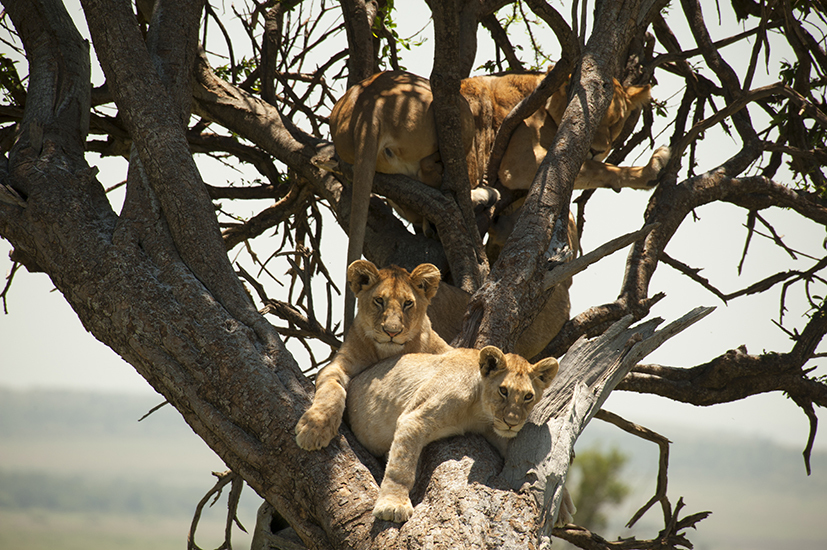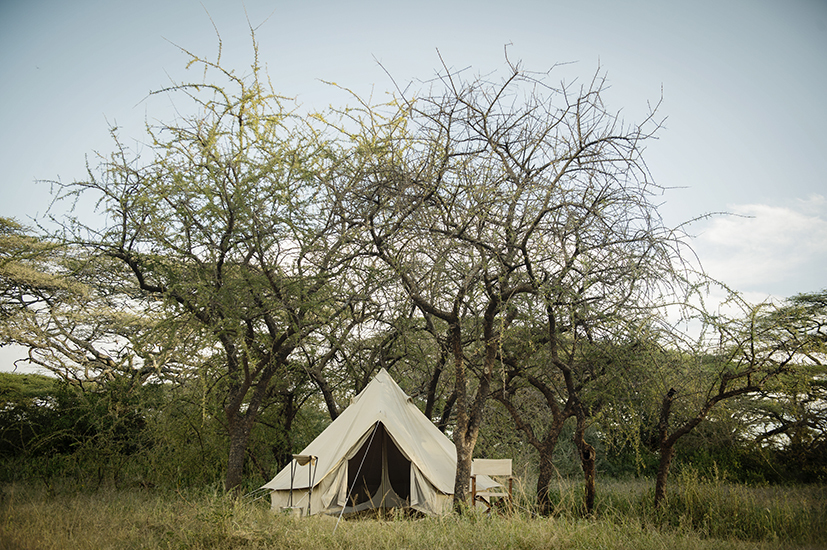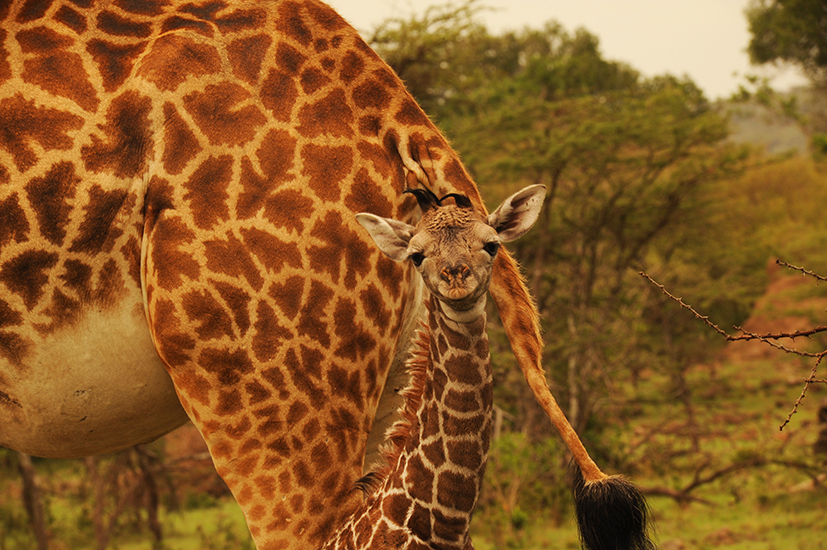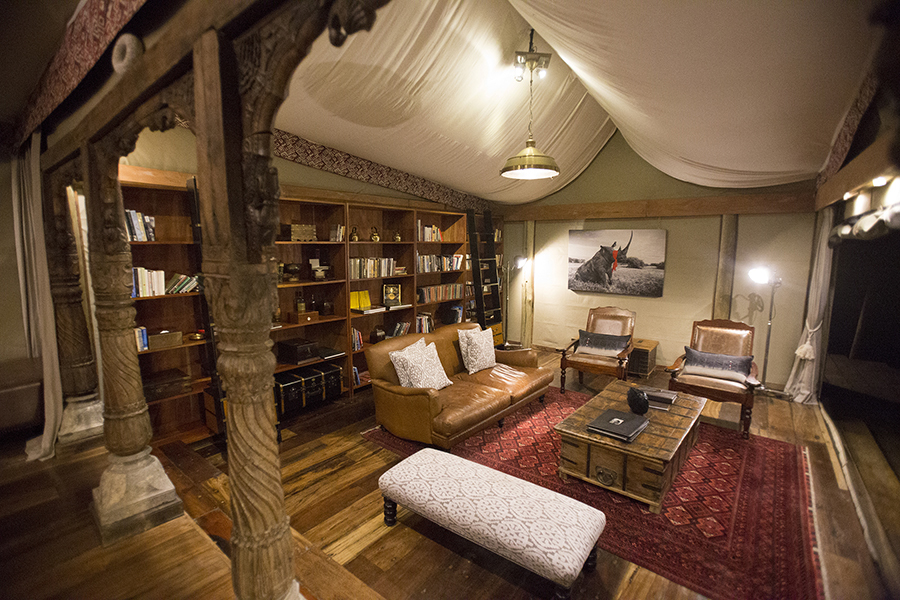The Mara
If you’re a documentary fan who’s familiar with Nineties TV, you’ll recognise Kenya’s Maasai Mara straight off the bat. The BBC’s wildlife-reality series Big Cat Diary was filmed here, making stars of its lion, leopard and cheetah dynasties.
When the Maasai Mara National Reserve was created, just north of Serengeti National Park in 1961, these dynasties were on the brink
of collapse, ravaged by early 20th-century big game hunters.
Fortunately, they recovered, and the Mara – the reserve and the
conservancies adjoining it – became Kenya’s most popular area for
photographic safaris. Legendary for its wildlife, it’s also a region where
local traditions continue, fostered by progressive conservation
policies. Many Maasai, unmistakable in their beads and scarlet shuka
blankets, still follow a simple pastoral lifestyle; if you stay at a camp
on a responsible lodge or conservancy, they benefit financially.
The region is particularly busy in the dry months between July and
October, when it’s the stage for one of Africa’s most dramatic wildlife
spectacles, the Great Migration. Thousands of wildebeest, zebras
and gazelles flood in from the Serengeti and attempt to cross the
Mara and Talek rivers, which twist alongside the conservancies and
through the reserve, making this a time of plenty for big cats, hyenas,
vultures and crocodiles. It’s unforgettable, but the herds of tourist
vehicles spoil the magic for some; if you’ve been on safari before or
would just like a less-crowded experience, try November or January
to June, when room rates plummet by more than half and you’re still
pretty much guaranteed to see zebras, Maasai giraffes, Thomson’s temperatures hover around 25C all year, the nights are always cool
and even the rainiest months (April and May) can be beautiful, with
clear light, vegetation, plentiful birdlife and baby antelopes galore.
Accommodation in the Mara has mushroomed in recent years but
old-school safari fans still love it here, since tented camps rich in heritage, be it European or Maasai, are more common than modern lodges. This is
Kenya’s priciest protected area but, overall, Kenyan safari holiday
prices compare well with South Africa and are considerably lower
than Botswana, Namibia or Zambia, all of which require longer
international flights. It’s easy enough to find a one-week trip which
includes the Mara for under £2,000pp, including flights from the UK.
True to safari tradition, most standard itineraries tour several parks,
spending a couple of nights in each, but you could choose to make
the Mara your focus for several days, allowing time off from wildlife-
watching drives to enjoy a spot of hot air ballooning, bushwalking and
fly-camping or a visit to a Maasai community to learn about traditions.
Though be aware: some of these local ‘villages’ can be a little touristy
and inauthentic, so check with your guide for recommendations.
While independent travel isn’t as common as in southern Africa’s
blockbuster self-drive safari destinations such as Kruger National Park
in South Africa or Etosha in Namibia, it is possible to hire a 4x4
and head west across the Great Rift Valley.
It’s a bumpy six-hour ride and one that we wouldn’t necessarily
recommend. Camping in public campsites such as those found in
the Mara Triangle maratriangle.org is available from as little as £21
per night, but is incomparable to the experience offered at a lodge
and the education it provides. Another option is to hire a driver or
simply book a group tour from a Nairobi-based safari company such
as Uniglobe uniglobeletsgotravel.com or Gamewatchers porini.com
sharing a minibus with a pop-up roof that affords a good view.
This can be fun, with an element of adventure, and you’ll see and
learn about far more wildlife with a keen-eyed guide than you would
going it alone on a self-drive tour. For a group of six, four-day trips
from Nairobi in high season start at approximately £712pp.
However, the quality of guiding on minibus tours is no match for the
expertise you can expect from the highly qualified KPSGA (Kenya
Professional Safari Guides Association) teams based at the top
camps, where wildlife-watching in well-equipped safari vehicles with
excellent 360-degree sightlines is almost always included in the room
rate, along with park fees (£58pp). Most camps call these excursions,
rather quaintly, ‘game drives’, a throwback to the days when safaris
were all about shooting animals with guns rather than cameras. They
love to throw in old-fashioned luxuries, too, from Maasai blankets to
keep you warm on chilly mornings to sundowners and snacks at classic viewpoints (each camp has its favourites). Your vehicle will
be open-sided; wear neutral colours, a hat and sunblock to stay
inconspicuous and dust-stain-free. Pack a warm jumper, too.
Most safari holidays include flights instead of road transfers,
whisking you from Nairobi’s Wilson Airport to the airstrip nearest your chosen camp in around 45 minutes. Safarilink flysafarilink.com offers
several scheduled departures daily in turboprop airliners. These
range from 13 passengers to 52. The smaller planes fly lower and
afford a better view, so plump for these if you can. Either way, you’ll
need to travel light – a 15kg baggage allowance is standard, and light aircraft usually only accept soft bags – but you’ll
have top views followed by a mini game drive to camp.
As for where to stay, luxury lodges and camps provide the best experience. They
have access to the best drivers and guides who will not only spot the
animals, but provide an education about local ecosystems and bush
life. It’s natural to assume that the accommodation inside the national reserve offers the best wildlife-watching opportunities, but don’t dismiss those
in the conservancies and private concessions, which give experiences
connected to the local community and give something back, too.
A safari is a once-in-a-lifetime experience and it’s a false economy
to cut corners. Extra costs add up quickly, so be sure to know exactly
what you are paying for, with whomever you choose to book.






